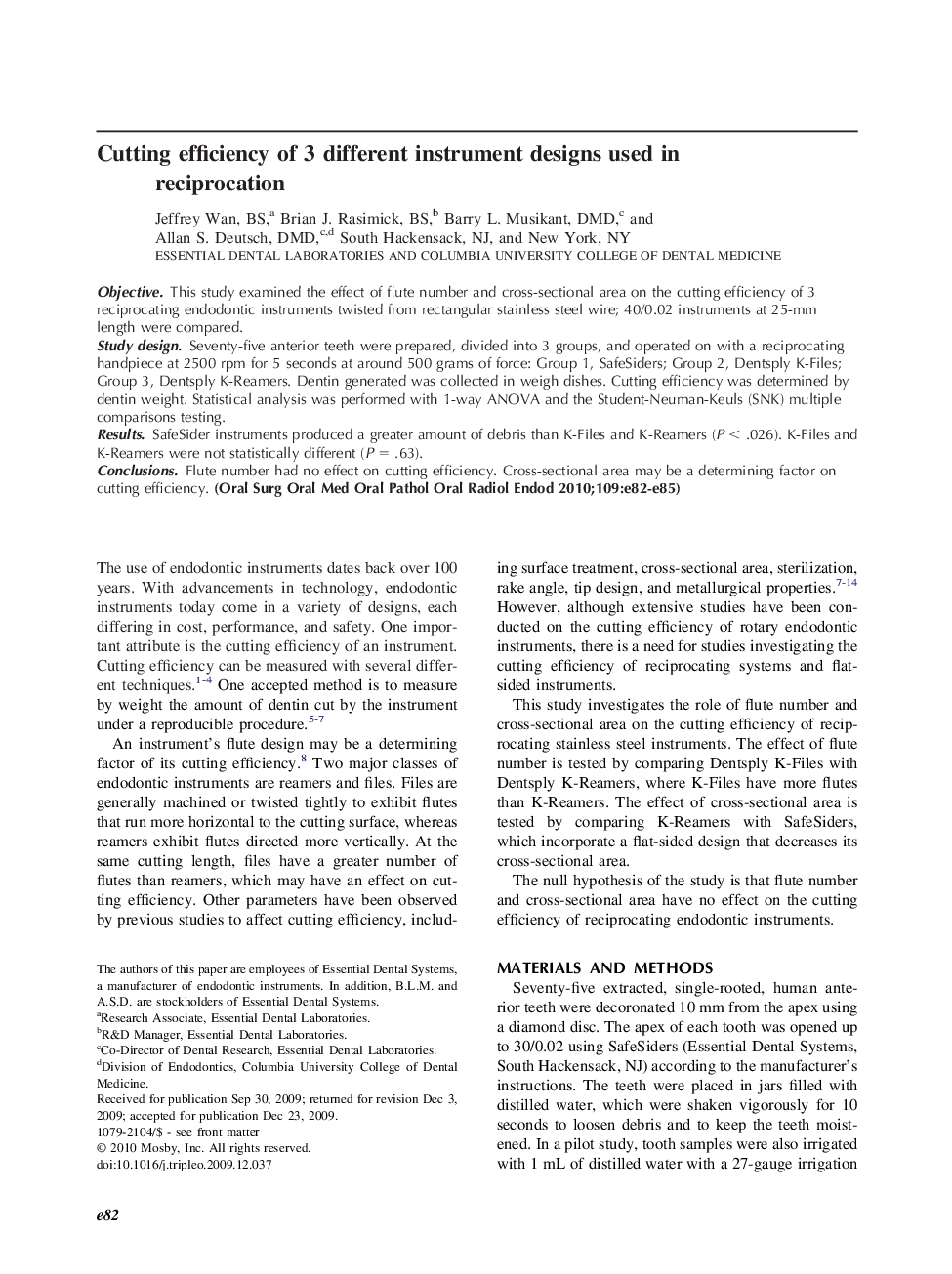| Article ID | Journal | Published Year | Pages | File Type |
|---|---|---|---|---|
| 3167654 | Oral Surgery, Oral Medicine, Oral Pathology, Oral Radiology, and Endodontology | 2010 | 4 Pages |
ObjectiveThis study examined the effect of flute number and cross-sectional area on the cutting efficiency of 3 reciprocating endodontic instruments twisted from rectangular stainless steel wire; 40/0.02 instruments at 25-mm length were compared.Study designSeventy-five anterior teeth were prepared, divided into 3 groups, and operated on with a reciprocating handpiece at 2500 rpm for 5 seconds at around 500 grams of force: Group 1, SafeSiders; Group 2, Dentsply K-Files; Group 3, Dentsply K-Reamers. Dentin generated was collected in weigh dishes. Cutting efficiency was determined by dentin weight. Statistical analysis was performed with 1-way ANOVA and the Student-Neuman-Keuls (SNK) multiple comparisons testing.ResultsSafeSider instruments produced a greater amount of debris than K-Files and K-Reamers (P < .026). K-Files and K-Reamers were not statistically different (P = .63).ConclusionsFlute number had no effect on cutting efficiency. Cross-sectional area may be a determining factor on cutting efficiency.
